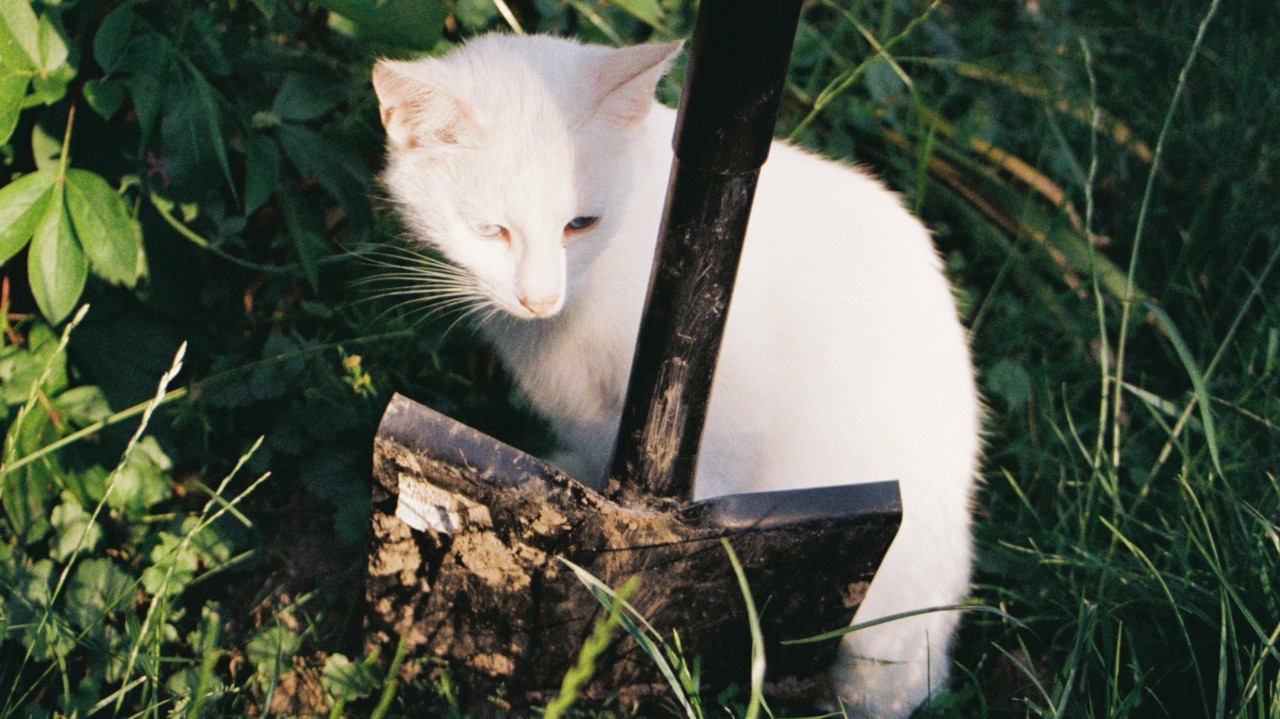

Photograph by Lukasz Wierzbowski / Connected Archives
WORDS BY JASON P. DINH
Devastating imagery flooded the media when Hurricane Katrina struck 20 years ago, but one scene stands out: Police officers took a small, white dog named Snowball from an inconsolable boy as he and his family boarded a bus to the Superdome. “Snowball, Snowball!” the child pleaded to the point of vomiting.
An estimated 250,000 cats and dogs were displaced or died during Hurricane Katrina, per the American Society for the Prevention of Cruelty to Animals, many with families much like Snowball’s who were separated from pets during the storm. Some residents reported being coerced by officials to abandon their dogs at local schools—dozens of those dogs were later found dead, allegedly shot by law enforcement. One family reported being threatened at gunpoint to leave their animal behind.
“After Hurricane Katrina, there were so many stories there about animals and people losing pets, people not evacuating because of pets,” said Dr. Ashley Farmer, who has researched pet disaster response at Illinois State University.
Shortly after the storm, Congress passed a pet disaster response bill with near-unanimous support. It was a milestone moment—one that, 20 years later, has become invaluable in the face of increasingly severe climate disasters.
States and municipalities often require residents to evacuate ahead of severe disasters, but pets complicate that decision for the two-thirds of American families that have them.
First responders don’t always let pet owners evacuate with their animals. Many emergency shelters, hotels, and motels don’t allow them, either. A 2021 ASPCA survey found that while 91% of pet owners plan to evacuate with their pets, 47% who have previously evacuated left at least one pet behind.
Other pet owners make dangerous decisions to stay with or rescue their pets. Pet ownership is the single greatest factor associated with people refusing orders to evacuate. Even after storms pass, more than 80% of people who return to disaster sites before it’s declared safe do so for their pets. Farmer recalled a waitress she once interviewed whose area flooded while she was at work; though roads were inaccessible, the determined woman walked a mile through hazardous floodwaters to save her dog.
“People consider their pets to be family,” Farmer said. “If you include pets in disaster planning, you will ultimately also save human lives.”
That was the goal of the Pets Evacuation and Transportation Standards Act of 2006, passed after Hurricane Katrina. The PETS Act called for state and local emergency preparedness plans to address the needs of pet owners and their animals during disasters and authorized the Federal Emergency Management Agency and other federal agencies to assist in rescuing and sheltering pet owners and their animals. The bill also allowed the federal government to reimburse local and state emergency managers for costs related to sheltering pets.
“People consider their pets to be family. If you include pets in disaster planning, you will ultimately also save human lives.”
“It’s impactful in a broad sense in that now people are being explicitly told… You should include pets in your planning,” said Farmer. “Being told to at least have that consideration can make a huge difference.”
The PETS Act heralded a mind-shift in disaster response philosophy, added Dr. Sarah DeYoung, a disaster researcher at the University of Delaware. “One of the major things that the PETS Act has done is push forward this idea of whole community in disaster response,” she said. “It also championed the idea and the symbolism of how pets are a part of the family.”
DeYoung and Farmer in 2021 published “Creatures Safe and Sound,” a book about pets and disaster based on their research of hurricanes Irma, Harvey, and Florence; the Tubbs, Carr, and Camp fires; and the 2018 Hawaii lava flows. They’re still working in this space, most recently researching how horse owners coped with the Kerrville, Texas floods. The pair’s research has found that the PETS Act has, on average, improved evacuation compliance and reduced barriers to evacuation, especially during hurricanes.
However, the PETS Act is not prescriptive; actual implementation is left to states and localities, which vary in how seriously they take pet disaster preparedness. Some states still omit pets from their emergency plans altogether.
“All the PETS Act really says is that states need to include pets in their planning. But sometimes that planning ends up being: And pets aren’t allowed at the shelter… and people are individually responsible for their pets,” said Farmer. “Having more actual guidance for how to plan for pets and disasters would be really helpful.”
The PETS Act, however impactful, could still be improved, researchers and advocates say. For starters, the law applies only to a small set of animals. It covers dogs, cats, birds, rabbits, rodents, and turtles, but it excludes fish, amphibians, farmed animals, horses, and other species. It doesn’t include stray or feral pets, either.
The law is also focused on short-term disaster response. “Essentially, there’s no consideration for long-term housing,” said DeYoung. Displaced pet owners often surrender their animals long after the disasters because they can’t find rental homes that accept pets. “That was not really included in or addressed by the PETS Act,” she said.
Then, there’s rampant misinformation on social media about what the PETS Act requires. It does not—despite popular opinion—force private businesses to accept pets during disasters. Farmer and DeYoung consider rectifying this oversight in their book—for example, by offering tax breaks to incentivize businesses to waive pet policies and fees.
A strong system of pet disaster protection would coordinate multiple agencies, including animal shelters and vets, Farmer said. This would help unify and distribute resources. For example, it could lead to a centralized location where people can search for their missing pets after a disaster, rather than navigating the hodgepodge of lost-and-found social media groups currently available.
“At the end of the day, safety from storms is a basic dignity—a universal right regardless of a person’s income, their race, or their dog’s breed.”
An ideal disaster response system would also reduce harm rather than victim blame, DeYoung said—for instance, by distributing cardboard carriers to low-income families. “Let’s do low-cost, efficient ways for helping people get out of those zones safely and quickly with their animals,” she said.
Progressive social policies go a long way in disaster response, DeYoung added. “The more vulnerable people you have who are living in poverty without health access themselves, the less likely they’re able to help their pets,” she said. “We need healthy human communities. So, progressive ideas for public health and emergency preparedness across the board also help animals.”
That’s perhaps the most important point, Farmer said. She wants to see a world where every pet owner has access to evacuation resources and opportunities. Governments could, for instance, assist pet owners without a vehicle or the finances to book a hotel room. They could also preempt discrimination associated with ownership of certain breeds like pit bulls—a prejudice rooted in anti-Black racism.
“If you do own a banned breed, you can’t bring them into shelters with you. And so your only choice is to leave them behind or go somewhere else. That’s assuming you have the resources to do so,” Farmer said. When she visited Miami-Dade County—which, until recently, banned pit bulls—after Hurricane Irma, “people would just turn their pit bulls loose outside of the shelter so that they could go in,” she said.
That leads to dog overpopulation, overrun shelters, and ultimately, dangerous practices like trunking—a brutal form of dog fighting where two dogs are placed in a car trunk to fight to the death while being driven around to loud music. “It’s a different version of dog fighting that emerges as a result of this overabundance of a certain breed in shelters: Farmer said.
At the end of the day, safety from storms is a basic dignity—a universal right regardless of a person’s income, their race, or their dog’s breed. “Yes, we’re talking about how people who have resources [can] plan for evacuation and sheltering,” Farmer said. “But how can your local government help you if you don’t have those resources?”
Hurricane Katrina Made the US Rethink Pet Rescue